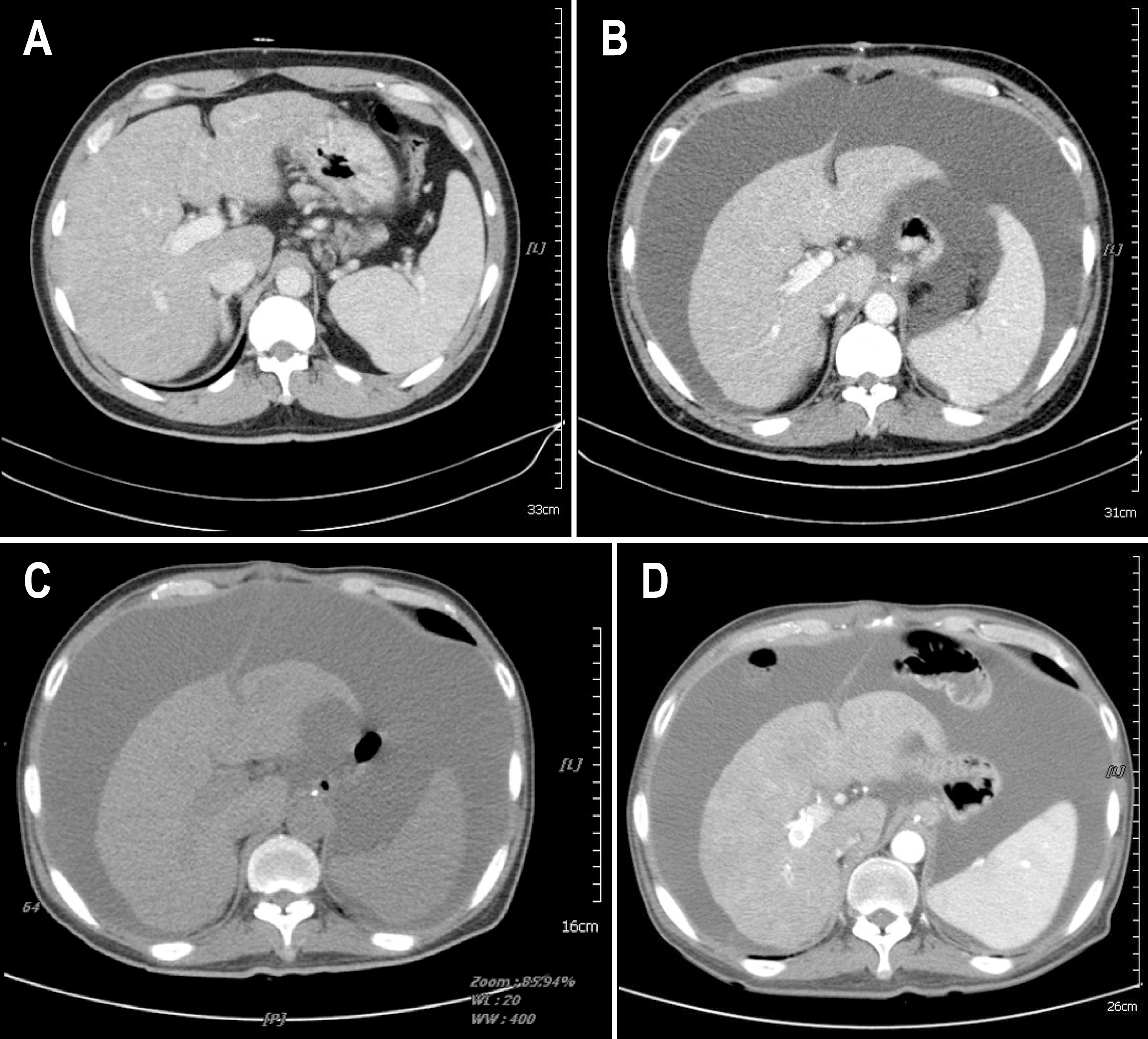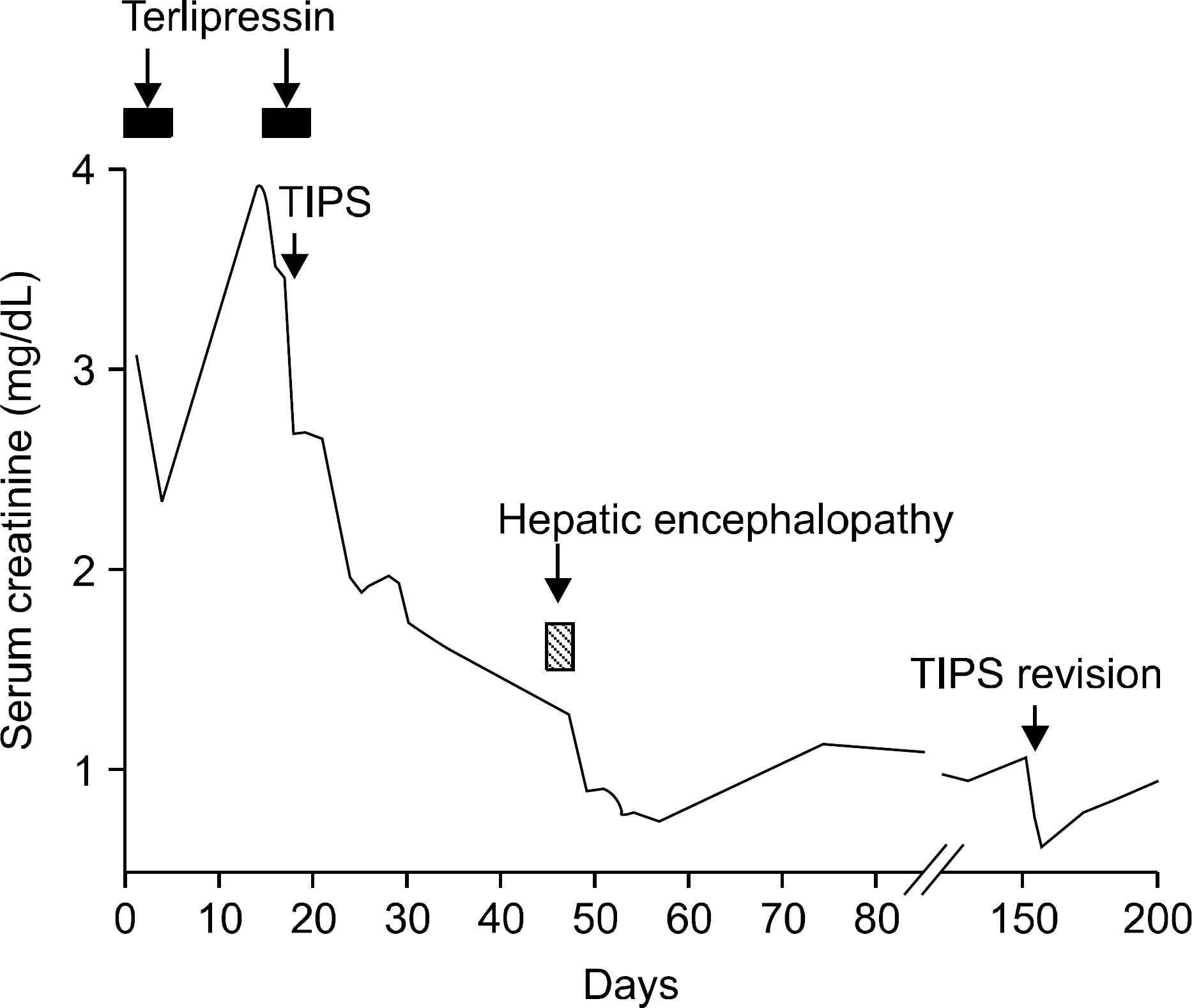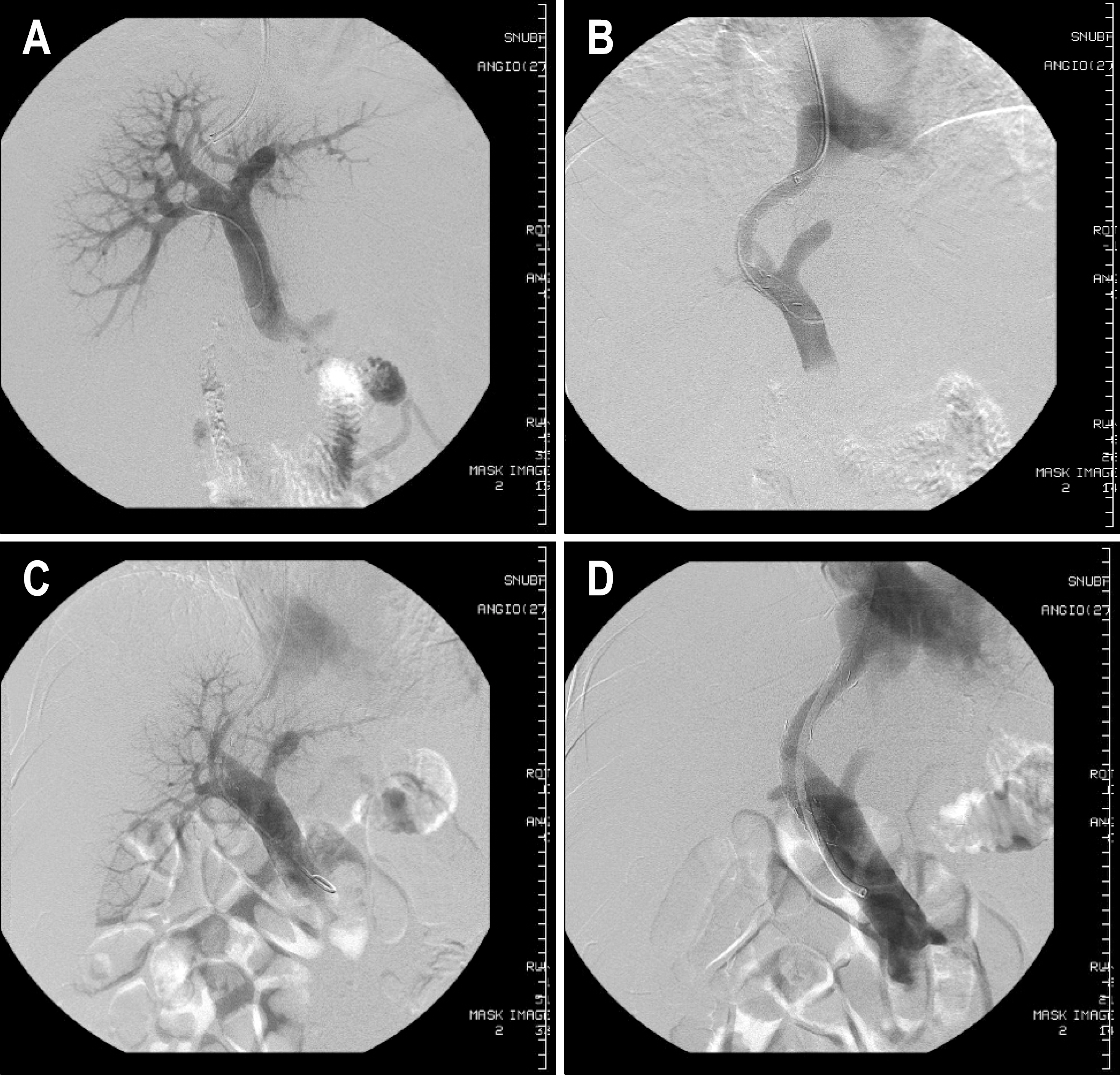Korean J Gastroenterol.
2010 Sep;56(3):125-127. 10.4166/kjg.2010.56.3.125.
Type 2 Hepatorenal Syndrome in a Cirrhotic Patient Who Underwent Gastric Cancer Surgery
- Affiliations
-
- 1Department of Medicine, Seoul National University Bundang Hospital, Seongnam, Korea. kimjw@snubh.org
- KMID: 948774
- DOI: http://doi.org/10.4166/kjg.2010.56.3.125
Abstract
- No abstract available.
MeSH Terms
Figure
Reference
-
1. Arroyo V, Terra C, Ginès P. Advances in the pathogenesis and treatment of type-1 and type-2 hepatorenal syndrome. J Hepatol. 2007; 46:935–946.
Article2. Salerno F, Gerbes A, Ginès P, Wong F, Arroyo V. Diagnosis, prevention and treatment of hepatorenal syndrome in cirrhosis. Postgrad Med J. 2008; 84:662–670.
Article3. Rössle M, Gerbes AL. TIPS for the treatment of refractory ascites, hepatorenal syndrome and hepatic hydrothorax: a critical update. Gut. 2010; 59:988–1000.
Article4. Brensing KA, Textor J, Perz J, et al. Long term outcome after transjugular intrahepatic portosystemic stent-shunt in non-transplant cirrhotics with hepatorenal syndrome: a phase II study. Gut. 2000; 47:288–295.
Article5. Testino G, Ferro C, Sumberaz A, et al. Type-2 hepatorenal syndrome and refractory ascites: role of transjugular intrahepatic portosystemic stent-shunt in eighteen patients with advanced cirrhosis awaiting orthotopic liver transplantation. Hepatogastroenterology. 2003; 50:1753–1755.6. Lee JH, Kim J, Cheong JH, Hyung WJ, Choi SH, Noh SH. Gastric cancer surgery in cirrhotic patients: result of gastrectomy with D2 lymph node dissection. World J Gastroenterol. 2005; 11:4623–4627.
Article7. Isozaki H, Okajima K, Ichinona T, Fujii K, Nomura E, Izumi N. Surgery for gastric cancer in patients with cirrhosis. Surg Today. 1997; 27:17–21.
Article8. Mariette C. Is there a place for esogastric cancer surgery in cirrhotic patients? Ann Surg Oncol. 2008; 15:680–682.
Article9. Jang HJ, Kim JH, Song HH, et al. Clinical outcomes of patients with liver cirrhosis who underwent curative surgery for gastric cancer: a retrospective multicenter study. Dig Dis Sci. 2008; 53:399–404.
Article
- Full Text Links
- Actions
-
Cited
- CITED
-
- Close
- Share
- Similar articles
-
- Evaluation of Renal Resistive Index in Cirrhotic Patients for Predicting the Hepatorenal Syndrome
- Acute Kidney Injury in Cirrhotic Patients with Portal Hypertension
- Hepatorenal Syndrome
- Predictors of response to therapy with terlipressin and albumin in patients with cirrhosis and type 1 hepatorenal syndrome
- Hepatorenal Syndrome




